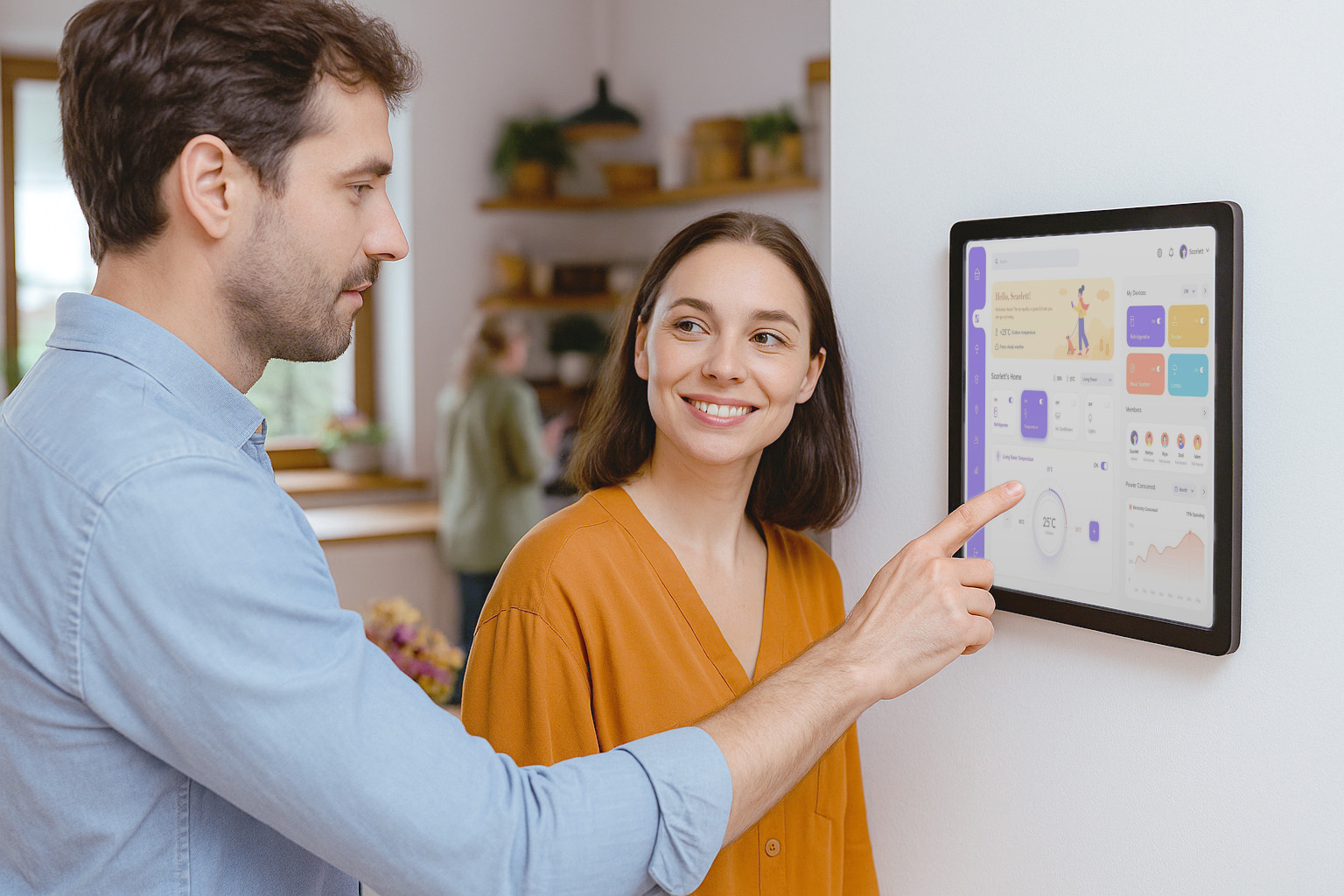Imagine stepping into your home and feeling like it just read your mind. The lights glow with your favorite evening hue, the air is the perfect temperature, and your playlist gently begins in the background—no buttons, no voice commands. It just happens. This isn’t science fiction. It’s real, and it’s happening right now.
In 2025, smart homes have evolved from quirky tech novelties into fully integrated, intelligent ecosystems. They’re learning your rhythms, anticipating your needs, and reshaping daily life. We’re well beyond smart bulbs and robotic vacuums. Today’s smart home is thoughtful, responsive, and often invisible.
No wonder the smart home market is booming. It’s projected to hit $116.4 billion by 2029, with steady annual growth of 6.6%. That’s not just hype—it’s a reflection of what people really want: homes that are easier, safer, greener, and yes—cooler.
AI: The Invisible Genius of Your Home
AI is the real MVP behind next-level smart homes. It’s what turns devices from reactive tools into proactive companions. Your thermostat doesn’t just follow a schedule—it learns when you come and go and fine-tunes the temperature to balance comfort and energy savings. The Nest Learning Thermostat is a prime example—it’s practically a member of the family at this point.
But AI has grown up. In 2025, it’s not just adjusting your environment—it’s monitoring your appliances, predicting maintenance needs, and alerting you before anything breaks down. Your washer can tell you when it’s feeling under the weather. Your voice assistant isn’t just taking orders anymore—it understands context. Say “movie night,” and your assistant dims the lights, closes the blinds, and queues up your favorite film. All in one go.
Security? AI is on it. Smart cameras now detect the difference between a stray cat and suspicious activity—and only ping you when it matters. It’s peace of mind that actually feels peaceful.
Smart Kitchens: From Sous Chef to Grocery Assistant
The kitchen used to be a chore zone. Now? It’s one of the smartest rooms in the house. Your fridge isn’t just cold storage—it tracks your groceries, alerts you before the milk expires, and even recommends recipes based on what’s inside. And yes, some can order groceries automatically.
Smart ovens like those from GE Appliances let you preheat on your way home or check the roast without opening the door. Your coffee maker knows when you’re waking up and has your brew ready. Dishwashers reorder detergent when it’s low. It’s like having an invisible team of helpers who never get in the way—but always show up when needed.
One House, One Brain: Integrated Ecosystems
The early days of smart home tech were, frankly, messy. Devices didn’t talk to each other. You needed five apps for five gadgets. It was like trying to conduct an orchestra with spaghetti. Not anymore.
Now, platforms like Amazon Alexa, Google Home, and Apple HomeKit bring harmony. You can control your lights, door locks, blinds, coffee machine—even your pet feeder—with a single app or voice command. Want more control? Open-source systems like Home Assistant let you build your own symphony from scratch.
Just remember: compatibility is key. Choose devices that speak the same language, and you’ll avoid the headaches of tech that won’t cooperate. When everything’s synced, it’s like your home just gets you.
Security That Thinks Ahead
Today’s smart security isn’t just watching—it’s thinking. About 45% of smart home owners have installed advanced security features, and it’s easy to see why.
Smart doorbells like Ring recognize familiar faces, so you know whether it’s your neighbor or a stranger at your door. Smart locks give you remote control over who enters—and when. AI-enhanced cameras send instant alerts for anything unusual and let you check in from anywhere in the world.
But remember: with great tech comes great responsibility. Set strong passwords. Keep software updated. A smart home should be safe on both sides of the door.
Energy Efficiency: Tech That Pays You Back
Smart homes aren’t just clever—they’re frugal. With energy costs on the rise, saving power matters more than ever. Smart thermostats like Ecobee and Nest optimize your heating and cooling without sacrificing comfort. 35% of smart home owners already use them to cut bills and emissions.
Lighting systems learn your patterns—or use motion sensors—so you’re never lighting up an empty room. Some even adjust color temperature through the day to support your circadian rhythm. Energy monitors help you spot waste—like that sneaky second fridge in the garage that’s draining dollars.
Going even further? Some homeowners pair solar panels with smart energy storage, creating homes that literally power themselves. That’s not just smart—it’s futuristic.
Health and Wellness, Built Right In
Health tech is no longer confined to your wrist. In 2025, your home itself can support your well-being. Smart mirrors like Lululemon’s Mirror offer guided workouts and track your performance. Scales analyze more than weight—they offer insights into body composition and progress.
Air quality monitors and purifiers adjust in real time, reacting to pollen or pollution before you sneeze. Lighting systems simulate natural sunlight to help regulate mood and sleep. Some homes even sync with wearables like Fitbit, tailoring advice to your actual habits.
In short, your home becomes a wellness coach—quietly optimizing your space to help you feel your best.
Entertainment, Elevated
If you thought “home theater” just meant a big screen and a soundbar, think again. In 2025, entertainment is immersive. Smart TVs auto-tune for the best visuals. Dolby Atmos sound makes action scenes rumble and rain sound like it’s actually hitting your roof.
Multi-room audio systems like Sonos let you fill your space with music—room by room, mood by mood. And for gamers? Adaptive lighting and real-time audio feedback turn the living room into a live arena.
All this, with a single command. Or better yet, no command at all.
What’s Next? Homes That Feel You
The smart home future is moving faster than ever. With 5G rolling out globally, latency disappears and reliability improves—paving the way for more complex and responsive systems. Your home will soon detect your mood, adjust lighting and temperature, and suggest actions based on subtle cues.
Groceries re-ordered before you realize you’re out. Lights shifting tone as your evening unwinds. Homes that not only respond—but understand. And as costs come down, these upgrades won’t just be for the tech-obsessed. They’ll be for everyone.
So—Are You Ready?
The smart home of 2025 isn’t just futuristic—it’s familiar. It’s warm, intuitive, helpful. It’s less about bells and whistles, and more about small moments made better: a room that greets you with quiet lighting, a coffee that’s ready before you are, a space that helps you breathe easier and sleep deeper.
You don’t need to buy everything at once. Start small: a thermostat here, a speaker there. Let your home learn with you. Because the future of living isn’t something you wait for—it’s something you build, one smart choice at a time.












